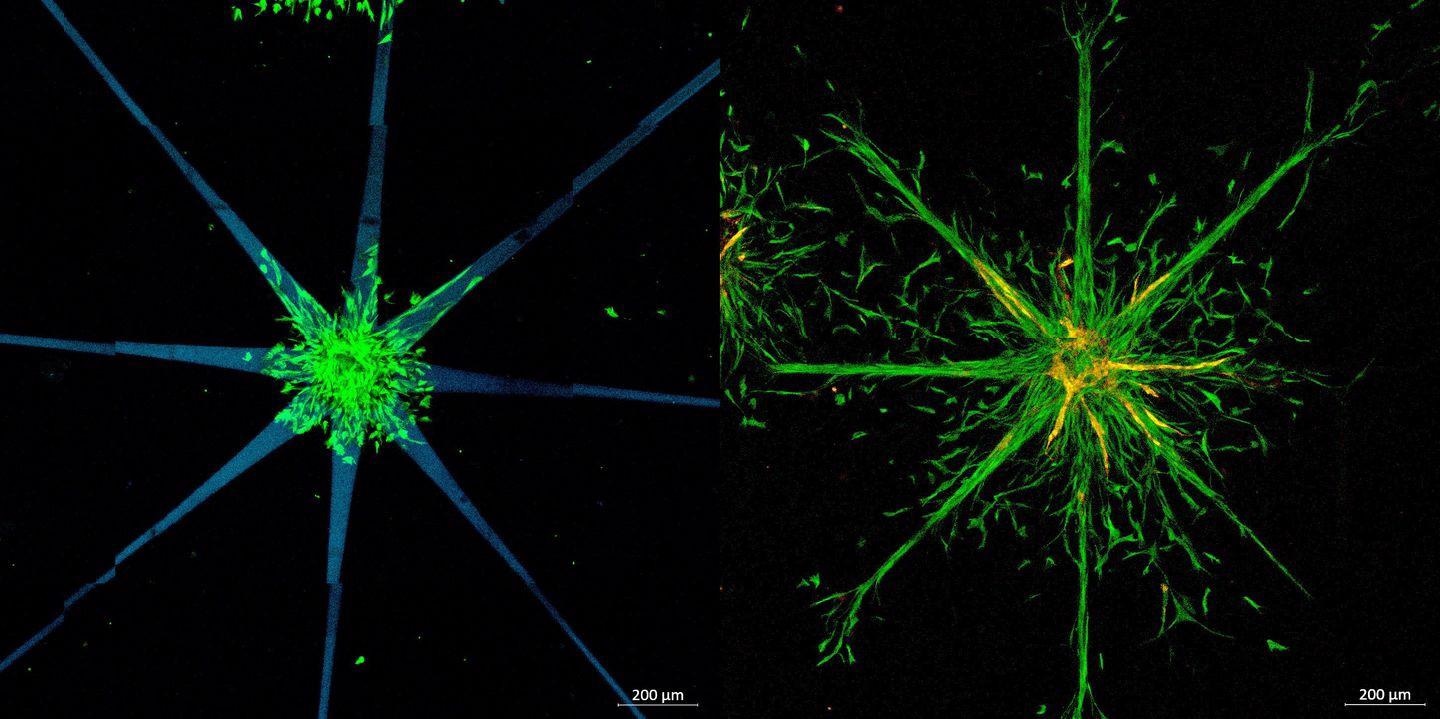Tissue engineering, a rapidly evolving discipline for the creation of artificial tissue and organs or in regenerative medicine applications, is a promising field of research and development. However, due to the complexity of scientific and technological challenges when creating biological tissue in the laboratory, precision is everything.
 Image Credit: TU Wien. (2022) Controlling Cells with a Laser Beam. [online] Available at: https://www.tuwien.at/en/tu-wien/news/news-articles/news/zellen-mit-dem-laser-steuern
Image Credit: TU Wien. (2022) Controlling Cells with a Laser Beam. [online] Available at: https://www.tuwien.at/en/tu-wien/news/news-articles/news/zellen-mit-dem-laser-steuern
Recently, a team of researchers at TU Wien (Vienna) has developed a method to guide individual cells to the appropriate place with laser-guided precision. The method directly addresses one of the biggest issues when producing artificial tissue: Making sure individual cells are guided to the right place, for instance, when a blood vessel needs to be created at a very specific location.
The TU Wien researchers have been able to make this kind of tissue engineering possible with their system, which enriches the hydrogel surrounding cells with very special molecules that can then be activated with a laser beam.
Once activated, the hydrogel is turned into a malleable solution at the exact points needed, making it possible to move the cells into the precise locations. This method could be of specific interest to those pursuing pharmaceutical research without animal testing.
Biocompatible Hydrogel
Using this novel technique, special tissue systems can be created in a reproducible way and carefully evaluated to test new drugs.
When making tissue constructs in the lab, you often start with living cells embedded in a hydrogel.
Prof. Aleksandr Ovsianikov, Head of 3D Printing and Biofabrication Research Group, TU Wien
The biocompatible hydrogel possesses similar properties to those of biological tissue.
Comparable to a gummy bear soaked with water.
Prof. Aleksandr Ovsianikov, Head of 3D Printing and Biofabrication Research Group, TU Wien
The cells are able to form into a tissue-like structure by migrating through the hydrogel.
The main purpose of tissue engineering is to construct functional structures that are able to restore, maintain or enhance damaged tissues or whole organs. Thus, one of the objectives of this research is to be able to control the process as much as possible to create structures that match specific, intricate designs.
To achieve this, the application of the laser beams allows the hydrogel in the network to become more hydrophilic. This transforms the properties of the hydrogel, making it possible to generate a 3D pattern that allows the cells to easily pass through.
Organs-on-a-Chip
This innovation means that by using laser beams, intricate shapes such as lattice- or star-shaped cell structures can be fabricated. While this specific development is not yet scaled for the creation of artificial organs, the TU Wien team refers to it as “organs” or “human” on a chip technology.
Rather than creating specific structures and parts for the replacement or regeneration of organs or large areas of tissue, the team is creating chips that can house tissue parts. These parts can then interact with one another on the chip to which nutrients and pharmaceutical compounds can be applied.
These chips, which are fairly compact at a few centimeters in size, can then acquire the relevant data and key information on how drugs impact the cells and tissue samples. This means researchers in the pharmaceutical field can conduct important testing scenarios without having to use animal models.
While this work opens the door to the use of this technique inside microfluidic devices, it is only effective if it can be carefully controlled and monitored. However, by guiding living cells using laser beams, the team hopes to unlock access to complex challenges associated with tissue engineering.
The TU Wien researchers have, for the first time, presented a basic “organs-on-a-chip” biofabrication technique that meets the biocompatible, high-resolution and high complexity requirements that are needed for creating microvessels while adapting to the microenvironment of individual cells.
References and Further Reading
Sayer, S. and Zandrini, T., et al., (2022) Guiding cell migration in 3D with high-resolution photografting. Scientific Reports, [online] 12(1). Available at: https://www.nature.com/articles/s41598-022-11612-y
TU Wien. (2022) Controlling Cells with a Laser Beam. [online] Available at: https://www.tuwien.at/en/tu-wien/news/news-articles/news/zellen-mit-dem-laser-steuern
Disclaimer: The views expressed here are those of the author expressed in their private capacity and do not necessarily represent the views of AZoM.com Limited T/A AZoNetwork the owner and operator of this website. This disclaimer forms part of the Terms and conditions of use of this website.